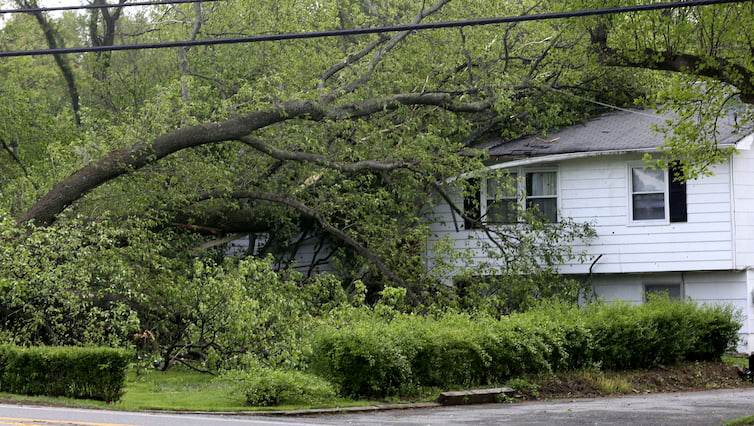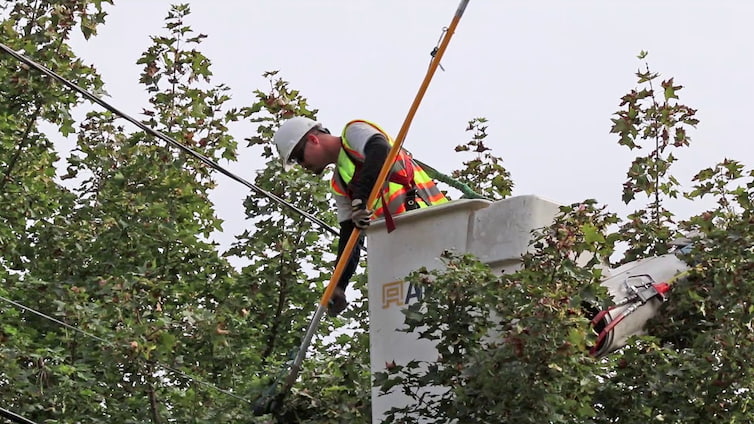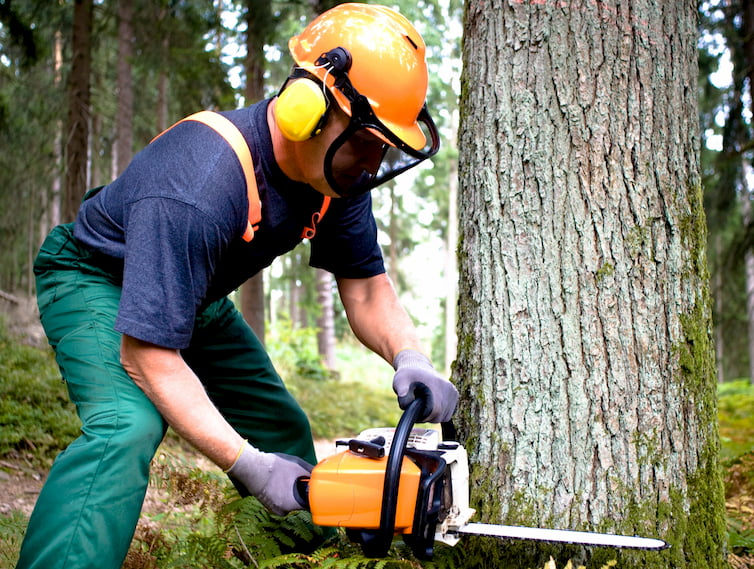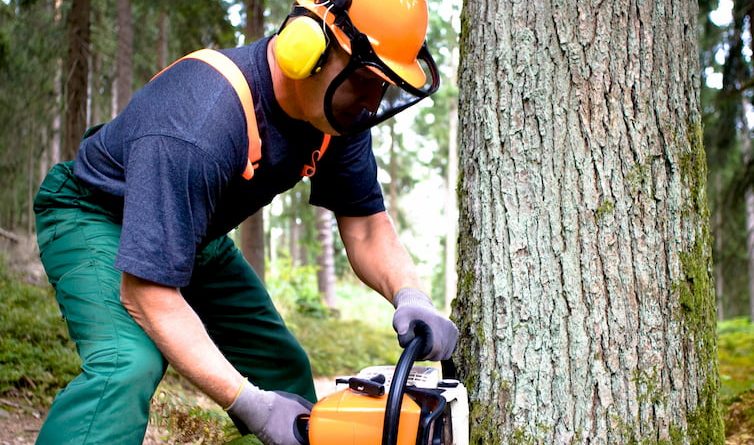How Tree Trimmers Help Save Power Lines and Trees
Utility poles as we know them today were first introduced around the mid 19th century. Back then they used to carry telegraph wires and the increased use of electricity made utility poles the primary way of connecting households to the grid. The utility poles in our neighbourhoods range anywhere from 9 to about 18 meters in height with the tallest power line suspension tower being 346 m tall (located in Jiangyin, China). Today, we have power lines located even in the steepest of hills with vegetation all around them. While these power lines are taller than the trees surrounding them, the majority of those present in our neighbourhoods aren’t. Trees that are close to power lines can cause power outages. This is where tree trimmers come in as to prevent trees from getting in contact with a power line.
What Happens If a Tree Touches a Power Line?
If a tree branch is touching or has fallen onto a power line one of two things can happen depending on the voltage of the power line. If it’s a low-voltage power line, the branch will just cause a power outage, however if the tree branch touches a high-voltage power line the branch can catch on fire. This is where power line clearance is required.

What Is the Difference Between an Arborist and a Tree Trimmer?
Both arborists and tree trimmers are capable of pruning/ trimming and planting trees. One advantage that arborists have is a better understating of trees in regards to how to look after a tree and make sure it is healthy.
Tree Trimming/ Pruning Near Power Lines
Topping
Topping is done in a more straightforward fashion (also called hedging or shearing). For this type of power line clearance trimmers cut the tree’s crown down to a point where they deem safe for both the tree and the power line. This is the fastest way to make a tree power line safe.
Directional Pruning
Directional pruning or the Shigo method is an alternative to topping. This type of powerline clearing requires to just cut the branches that are headed towards the power line. Those that are growing away from the power lines aren’t cut at all.

Safety Precautions
Minimum Working Distance
Tree trimmers must always maintain safe (minimum) working distance. They also avoid using any conductive tools near power lines such as ladders and pole trimmers. It is important that they treat all power lines as they were to be energized.
PPE
Tree trimming requires wearing personal protective equipment no matter how easy or difficult a task. Necessary equipment includes: leather gloves, a non-conductive hard hat, close-fitting long sleeved clothing, protective goggles, shoes with heel and slip-resistant soles and ear protection.

Pre-Work Assessment
This is not a routine job. Tree trimmers always need to make an assessment of the issue at hand no matter how difficult it is. This way they can figure out the safest way to solve the problem at hand. They also carry latches, a fall protection harness, a climbing rope and a ladder in case they need to climb a tree. Tree trimmers also need to inspect their tools and keep them sharp at all times so they are ready to go whenever they need them.
Protecting Passersby
Along with keeping power lines and trees safe from each other, the safety of coworkers and passersby is also something a tree trimmer has to think about. This includes marking one’s work area clearly around the tree so people are wary of the activity and know they should stay away. When working on a tree that goes over or near a road, they wear high visibility clothes and use cones with proper signalisation to make sure traffic is not disturbed as much.

